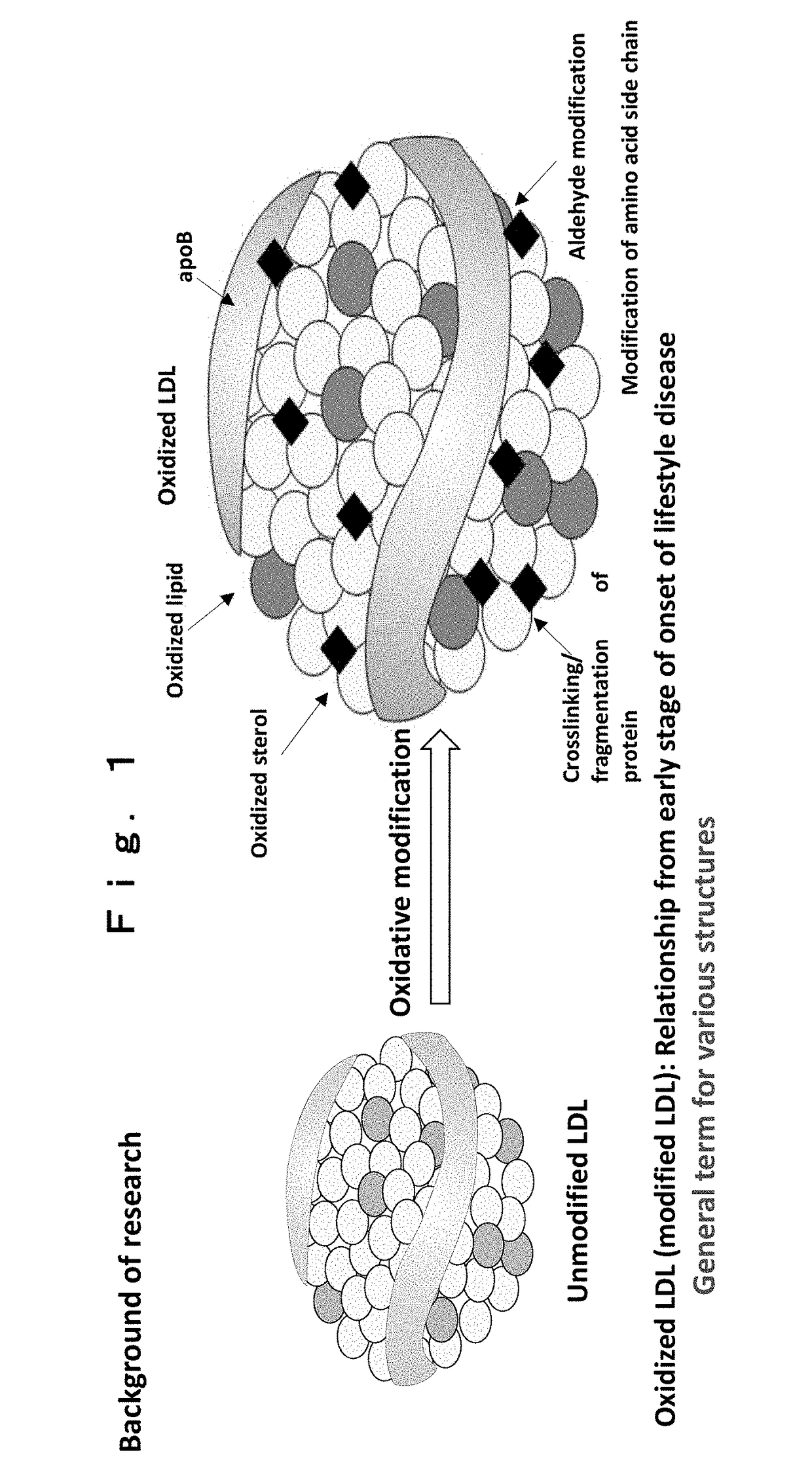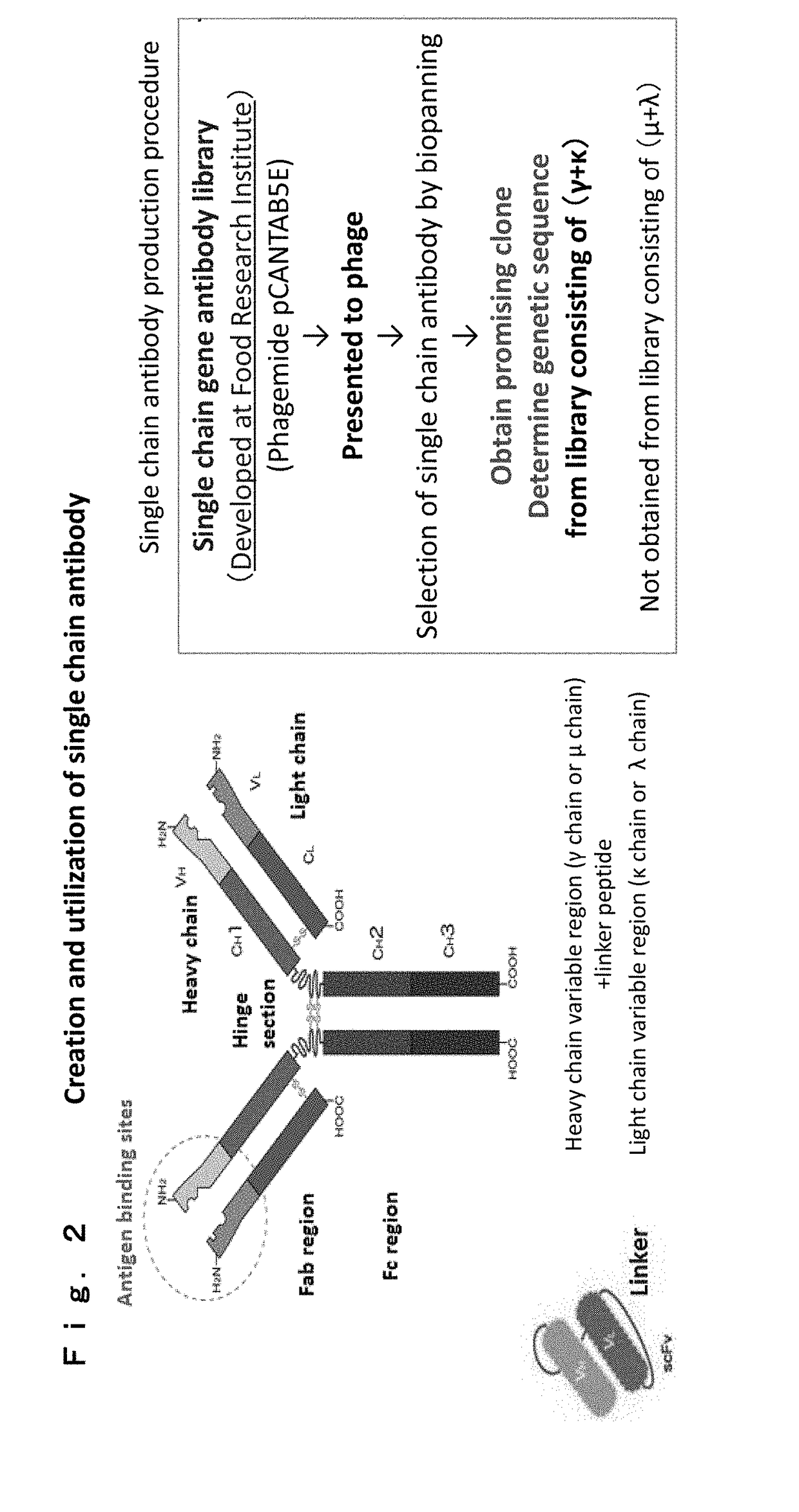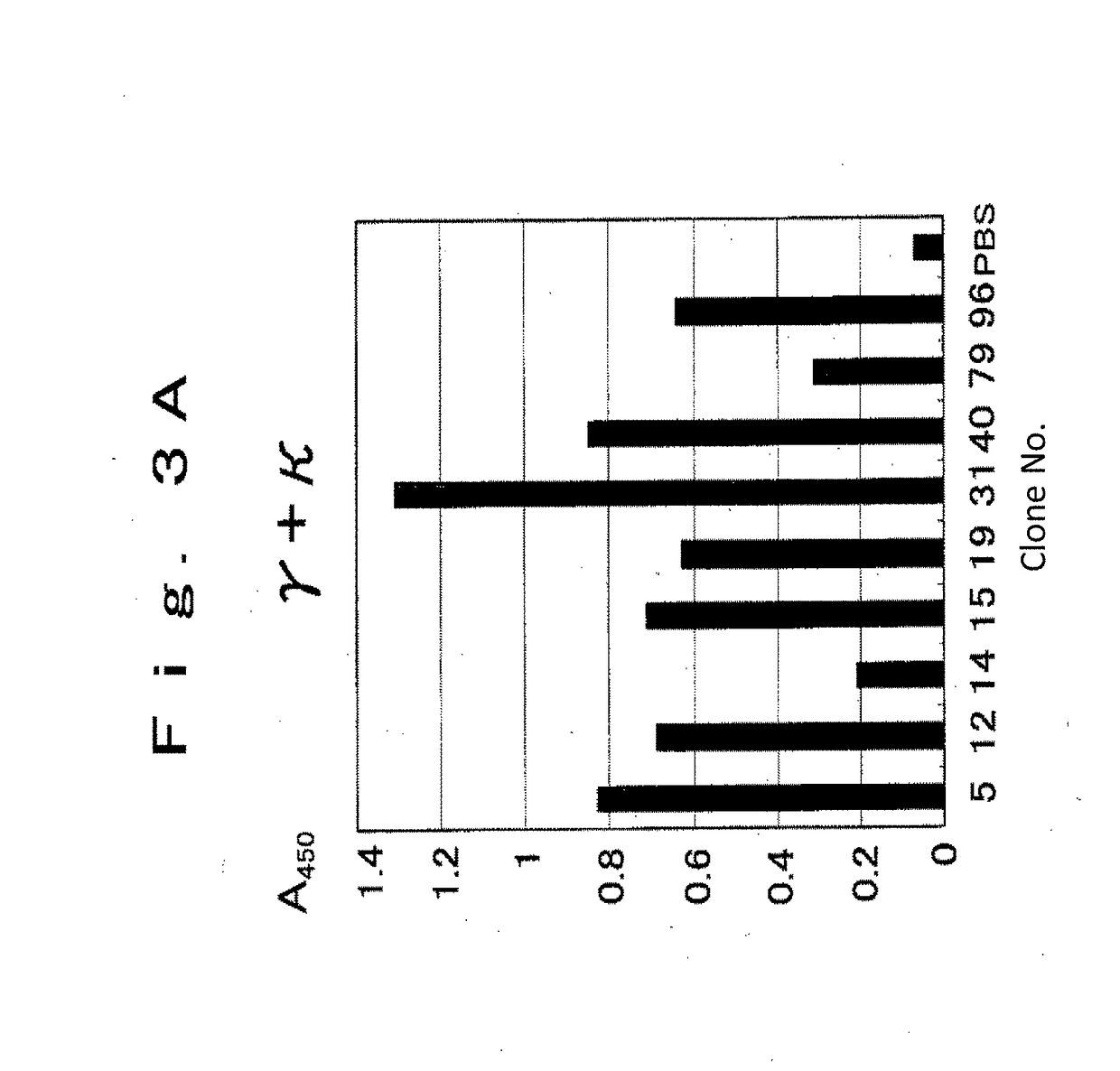Biotinylated and oxidized ldl receptor and advanced glycation end product receptor produced using genetically engineered silkworm
a technology of oxidized ldl and end product, which is applied in the field of biotinylated and oxidized ldl receptor and advanced glycation end product receptor produced using genetically engineered silkworm, can solve the problems of increased mortality rate due to such diseases, increased circulatory diseases, and difficulty in accurately measuring the amount of modified ldls, such as oxidized ldls, in the living body. , to achieve the effect of excellen
- Summary
- Abstract
- Description
- Claims
- Application Information
AI Technical Summary
Benefits of technology
Problems solved by technology
Method used
Image
Examples
example 1
n of Single Chain Antibody Gene Library
[0504]The methods of Marks et al. and Hawkins et al. were altered to create a single chain antibody gene library (Marks et al., J. Mol. Biol. 222:581-597(1991); Hawkins et al., Blood 83: 3279-3288(1994)). Bigdye® terminator v1.1 cycle sequencing kit (Applied Biosystems) was used and the protocol was followed for sequencing reactions. Further, the primers in Table 1 were used depending on the type of plasmid DNA. As used herein, the normal direction of a primer is called forward (FORWARD or FOR) and the opposite direction is called reverse (REVERSE or REV) or back (BACK). Reverse (REVERSE or REV) and back (BACK) indicate the same herein with respect to primers.
TABLE 1pET-22 (+)T7terminator5′-GCTAGTTATTGCTCAGCGG-3′(SEQ ID NO: 6) indicates data missing or illegible when filed
(1. cDNA Synthesis) First-strand cDNA was synthesized from human spleen poly A+ RNA (BD Biosciences) by using First-strand cDNA synthesis Kit (GE Healthcare). The primers in ...
example 2
of Single Chain Antibody Binding to LDL
[0516](1. Preparation of LDL)
[0517]Prepared LDLs were fully oxidized according to a common method (Steinbrecher, 1984) in order to prepare oxidized LDLs to be used as an antigen. That is, CuSO4 was added to 1 mg / ml of LDL (dialyzed with PBS) so that the final concentration was 5 μM, and was reacted for 20 hours under aseptic conditions at 37° C., and then EDTA was added so that the final concentration was 1 mM. Next, the mixture was dialyzed with PBS, filtered, and sterilized the mixture was then supplemented with NaN3 to have a concentration of 0.02% and was stored at 4° C.
[0518](2. Biopanning)
[0519]Prepared oxidized LDLs were used to perform a screening called biopanning. 5 ml of 1 μg / ml oxidized LDL (diluted with PBS) was added to a slanted neck culture cell flask (25 ml, BD Falcon) and was reacted for 2 hours at room temperature, then washed with PBS (30 ml). Next, blocking buffer (PBS comprising 0.25% BSA) was added and reacted for 1 hour ...
example 3
n of Single Chain Antibody
[0524](1. Used Bacterial Strain, Plasmid DNA and Phagemid DNA)
[Table 8A]pET-22b(+) Ampr
[0525](2. Culture of E. coli)
[0526]A 2× YT medium, LB medium, and SOBAG medium were used for culture, and an agar medium supplemented with 1.5% agar was used as a solid medium. When an agent was added, the final concentration was ampicillin 100 μg / ml, kanamycin 15 μg / ml, tetracycline 12.5 μg / ml, nalidixic acid 100 μg / ml, and X-gal 30 μg / ml. Glucose, when added for catabolite repression, was added such that the final concertation was 5%.
[Table 8B]NaCl
[Table 8C]Adjusted to with NaOH
[Table 8D]20 mg / ml Ampicillin 5 ml
[0527](3. Preparation of Phagemid DNA and Plasmid DNA from E. coli)
[0528]When a small quantity was prepared, a single colony was transplanted to a 2 ml LB medium, and plasmid DNA and phagemid DNA were prepared using a FlexiPrep kit (GE Healthcare).
[0529]When a large quantity was prepared, a single colony was transplanted to a 2 ml LB medium and was pre-cultured ...
PUM
| Property | Measurement | Unit |
|---|---|---|
| concentration | aaaaa | aaaaa |
| pH | aaaaa | aaaaa |
| flow rate | aaaaa | aaaaa |
Abstract
Description
Claims
Application Information
 Login to View More
Login to View More - R&D
- Intellectual Property
- Life Sciences
- Materials
- Tech Scout
- Unparalleled Data Quality
- Higher Quality Content
- 60% Fewer Hallucinations
Browse by: Latest US Patents, China's latest patents, Technical Efficacy Thesaurus, Application Domain, Technology Topic, Popular Technical Reports.
© 2025 PatSnap. All rights reserved.Legal|Privacy policy|Modern Slavery Act Transparency Statement|Sitemap|About US| Contact US: help@patsnap.com



